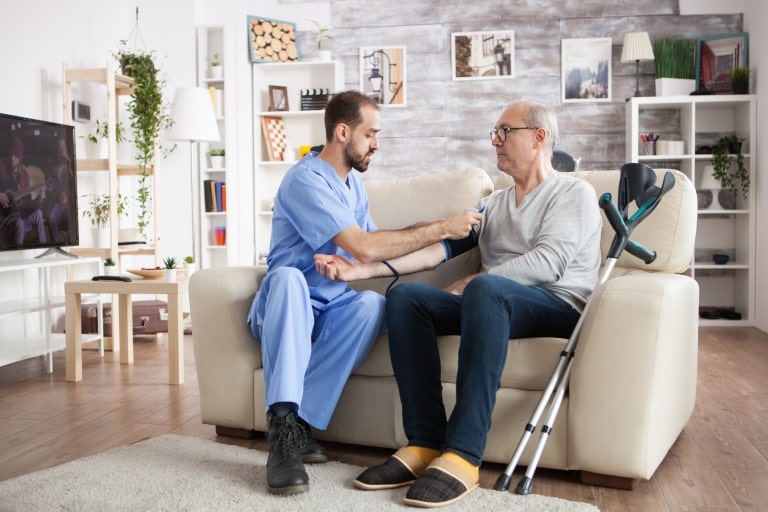Post-Stroke Communication: Modern Speech Therapy

Maria watched her husband struggle to say “coffee” for the third time that morning. Six months after his stroke, simple words felt like climbing mountains. She wondered if this was their new normal.
For many stroke survivors and their families, communication challenges become an unexpected journey. About one-third of stroke patients face speech and language problems that require professional help. The path to recovery varies widely, but modern approaches offer more hope than ever before.
Understanding Post-Stroke Communication Changes
Stroke affects communication in three main ways. Aphasia disrupts your ability to speak and understand language. It makes finding words feel impossible. You might know what you want to say but can’t access the words.
Dysarthria affects muscle control for speech. Your words may sound slurred or unclear. Apraxia impacts the brain’s ability to plan speech movements. You know what to say but struggle to coordinate the mouth movements.
About one-third of stroke patients suffer speech and language problems that require speech therapy services as part of stroke rehabilitation. These changes can happen suddenly. One day you’re speaking normally, the next you’re searching for basic words.
The left side of the brain controls language for most people. When stroke damages this area, communication problems often follow. The severity depends on which specific regions are affected and how much damage occurred.
The Recovery Timeline
Recovery happens in stages. The most dramatic progress in speech recovery happens within the first three months, but you can still regain speech long after. Many people see improvements in the first few weeks. Progress often continues for months or even years with proper therapy.
Early intervention makes a difference. Stroke survivors who did more intense courses of therapy within two to three months after the stroke experienced the greatest improvement in their symptoms by the one year mark compared to those who did therapy later or were in a control group. This doesn’t mean recovery stops after three months. People continue making gains with consistent work.
Individual factors influence recovery speed. Age, overall health, stroke severity, and motivation all play roles. Some people recover most of their speech abilities. Others learn new ways to communicate effectively.
Modern Therapy Approaches
Traditional face-to-face therapy remains the gold standard. Speech therapists work with patients to rebuild language skills through targeted exercises. These sessions focus on specific problem areas like word finding, sentence building, or muscle strengthening.
Digital tools are transforming treatment options. Smartphone-based speech therapy apps significantly improved speech intelligibility, articulation, and quality of life in patients with poststroke dysarthria. Apps provide extra practice between sessions. They adapt to individual progress levels and track improvements over time.
Telepractice has expanded access to care. Weighted Tau-U averages showed an advantage of telepractice over in-person treatment in the acquisition effects of trained words, with participants demonstrating a very large effect (0.84, p < .01) following telepractice and a large effect (0.75, p < .01) following in-person treatment. Video sessions work especially well for people in rural areas or those with mobility challenges.
Group therapy offers social benefits. Practicing with others who understand the struggle reduces isolation. Family training helps loved ones support communication goals at home.
Building Your Support System
Professional help forms the foundation. Speech therapists assess your specific needs and create treatment plans. They teach techniques that work for your type of communication challenge. Working with certified professionals who specialize in adult speech therapy services ensures you get evidence-based treatment.
Family involvement speeds progress. When family members learn communication strategies, daily interactions become therapy opportunities. Simple changes like speaking slower, using gestures, and being patient create supportive environments.
Technology extends practice time. Tablets and phones let you work on speech goals anywhere. Many apps track progress and adjust difficulty automatically. Some connect you with online therapy sessions when in-person visits aren’t possible.
Community resources provide ongoing support. Stroke support groups connect you with others on similar journeys. Libraries often have aphasia-friendly book clubs. Community centers may offer communication classes.
Taking Action for Recovery
Start therapy as soon as medically possible. Early treatment during the brain’s most active healing period leads to better outcomes. Don’t wait for “spontaneous” recovery. Professional guidance maximizes your potential.
Stay consistent with practice. Daily work builds new neural pathways. Even 20 minutes of focused practice makes a difference. Mix formal exercises with real conversations for balanced improvement.
Set realistic goals. Progress happens gradually. Celebrate small wins like saying a new word clearly or finishing a sentence. These victories build momentum for bigger achievements.
Keep learning about your condition. Understanding how your brain heals helps you stay motivated during difficult periods. Knowledge empowers you to make informed decisions about treatment options.
Recovery from stroke-related communication challenges takes time and patience. Modern therapy options provide more pathways to improvement than ever before. With professional guidance, family support, and consistent effort, many people regain meaningful communication abilities. The journey looks different for everyone, but hope and progress remain possible.




